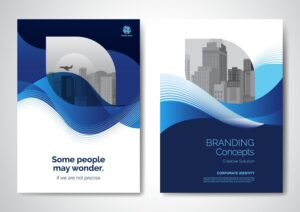Introduction
Blogging has become one of the most powerful tools for businesses and individuals to connect with audiences, share expertise, and boost visibility online. However, creating engaging content requires more than just writing—it demands strategy, creativity, and structure. By applying proven blog writing techniques, you can attract more readers, improve SEO rankings, and establish authority in your niche.
Why Blog Writing Techniques Matter
In today’s digital world, competition for attention is fierce. A well-written blog not only educates but also keeps readers engaged and encourages them to take action. Applying effective blog writing techniques helps in:
-
Increasing website traffic
-
Building brand credibility
-
Enhancing search engine visibility
-
Generating leads and conversions
If you’re aiming to strengthen your brand voice, a strong website content strategy combined with the right techniques is essential.
Essential Blog Writing Techniques
1. Craft Catchy Headlines
Your headline is the first impression readers get. Use power words, numbers, or questions to grab attention. For example, instead of “Tips for Writing,” say “10 Blog Writing Techniques to Double Your Traffic.”
2. Focus on SEO Without Overstuffing
Integrate keywords naturally within your content. Use your target keyword 5–6 times for balance, but avoid keyword stuffing. Optimized blogs rank higher and attract organic traffic.
3. Write Engaging Introductions
A compelling intro hooks readers. Start with a question, a surprising fact, or a relatable problem to encourage them to keep reading.
4. Use Subheadings for Structure
Breaking content into H2 and H3 tags improves readability and helps both readers and search engines understand your blog flow.
5. Incorporate Internal and External Links
Guide readers to related resources on your site. For instance, check our content strategy services to enhance your blogging efforts. Additionally, use trusted external sources like The Hindu BusinessLine for credibility.
6. Keep Paragraphs Short and Scannable
Readers skim content. Write short paragraphs, use bullet points, and bold key phrases to improve readability.
7. Add Visual Elements
Images, infographics, and videos make blogs more engaging and break text monotony. They also increase shareability on social media.

8. Maintain a Consistent Tone
Your tone should reflect your brand identity. Whether professional, friendly, or persuasive, consistency builds trust and loyalty.
9. Use Call-to-Actions (CTAs)
Encourage readers to comment, subscribe, or contact you for services. CTAs drive engagement and conversions.
10. Edit and Proofread Thoroughly
Polished blogs reflect professionalism. Check grammar, spelling, and clarity before publishing. Tools like Grammarly or Hemingway can help refine your writing.
Advanced Blog Writing Techniques
Storytelling for Connection
Stories create emotional connections and make your content memorable. Blend facts with storytelling to keep readers hooked.
Data and Research Integration
Support claims with data and research. This builds authority and makes your blogs more persuasive.
Personalization
Address reader pain points directly. Content that feels “tailored” resonates better and improves engagement.
Conclusion
Mastering blog writing techniques is essential for standing out in the crowded digital space. From compelling headlines to strategic SEO use, storytelling, and strong CTAs, these practices elevate your blog from ordinary to impactful. By consistently applying these techniques, you can build credibility, boost traffic, and achieve your online goals.
For professional help in crafting tailored blogs that align with your business goals, explore our expert content services.
Explore more related articles to deepen your understanding
Best Fonts for Branding: Create a Lasting Visual Identity
SEO Content Writing: A Complete Guide for BeginnersDoes Google use Cloudflare
Content Writing Basics: A Beginner’s Guide to Effective Writing







